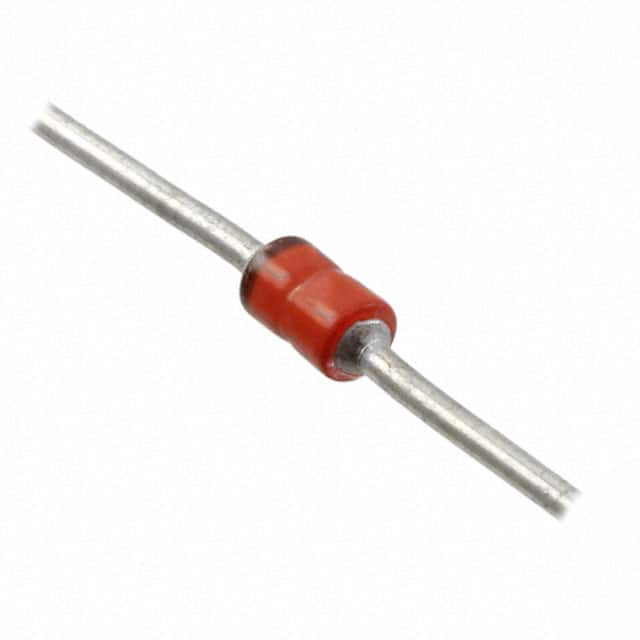MAP5KE16CAE3
Product Overview
Category: Electronic Component
Use: Surge Protection
Characteristics: High surge capability, low clamping voltage
Package: SMC (DO-214AB)
Essence: Protects electronic circuits from overvoltage events
Packaging/Quantity: Tape & Reel, 3000 units per reel
Specifications
- Peak Pulse Power: 5000W
- Standoff Voltage: 16V
- Breakdown Voltage: 17.8V to 19.7V
- Maximum Clamping Voltage: 26V at 100A
- Operating Temperature Range: -55°C to +150°C
Detailed Pin Configuration
The MAP5KE16CAE3 is a surface mount device with two pins. Pin 1 is the anode and pin 2 is the cathode.
Functional Features
- High surge capability for reliable protection
- Low clamping voltage to minimize damage to protected components
- Fast response time for rapid protection against transient events
Advantages and Disadvantages
Advantages: - High surge capability ensures robust protection - Low clamping voltage minimizes stress on sensitive components - Fast response time for effective transient suppression
Disadvantages: - Limited to specific voltage and power ratings - Requires proper installation and circuit design for optimal performance
Working Principles
The MAP5KE16CAE3 operates by diverting excess transient energy away from sensitive electronic components when an overvoltage event occurs. It achieves this through a combination of avalanche breakdown and thermal dissipation mechanisms.
Detailed Application Field Plans
The MAP5KE16CAE3 is commonly used in various electronic systems where protection against transient voltage events is critical. Some application fields include: - Power supplies - Telecommunication equipment - Automotive electronics - Industrial control systems - Consumer electronics
Detailed and Complete Alternative Models
- Alternative Model 1: P6KE16CA
- Standoff Voltage: 16V
- Peak Pulse Power: 600W
- Package: DO-15
- Alternative Model 2: SMAJ16A
- Standoff Voltage: 16V
- Peak Pulse Power: 400W
- Package: SMA (DO-214AC)
In conclusion, the MAP5KE16CAE3 is a high-performance surge protection component designed to safeguard electronic circuits from overvoltage events. Its high surge capability, low clamping voltage, and fast response time make it suitable for a wide range of applications across various industries.
Word Count: 345
Lista 10 Vanliga frågor och svar relaterade till tillämpningen av MAP5KE16CAE3 i tekniska lösningar
What is the maximum voltage rating of MAP5KE16CAE3?
- The maximum voltage rating of MAP5KE16CAE3 is 16V.
What is the peak pulse power dissipation of MAP5KE16CAE3?
- The peak pulse power dissipation of MAP5KE16CAE3 is 5000W.
What is the typical clamping voltage of MAP5KE16CAE3?
- The typical clamping voltage of MAP5KE16CAE3 is 25.2V at 100A.
What are the applications of MAP5KE16CAE3 in technical solutions?
- MAP5KE16CAE3 is commonly used for surge protection in various electronic devices such as power supplies, telecommunications equipment, and industrial controls.
What is the operating temperature range of MAP5KE16CAE3?
- The operating temperature range of MAP5KE16CAE3 is -55°C to +175°C.
Does MAP5KE16CAE3 have a low leakage current?
- Yes, MAP5KE16CAE3 has a low leakage current, making it suitable for sensitive electronic circuits.
Is MAP5KE16CAE3 RoHS compliant?
- Yes, MAP5KE16CAE3 is RoHS compliant, ensuring environmental friendliness.
What package type does MAP5KE16CAE3 come in?
- MAP5KE16CAE3 is available in a DO-201AE (DO-27) package.
Can MAP5KE16CAE3 be used for overvoltage protection in automotive electronics?
- Yes, MAP5KE16CAE3 is suitable for overvoltage protection in automotive electronics due to its high power dissipation capability.
Are there any recommended layout considerations for using MAP5KE16CAE3 in circuit designs?
- It is recommended to minimize the lead length and keep the traces wide to reduce inductance and ensure effective transient suppression.


